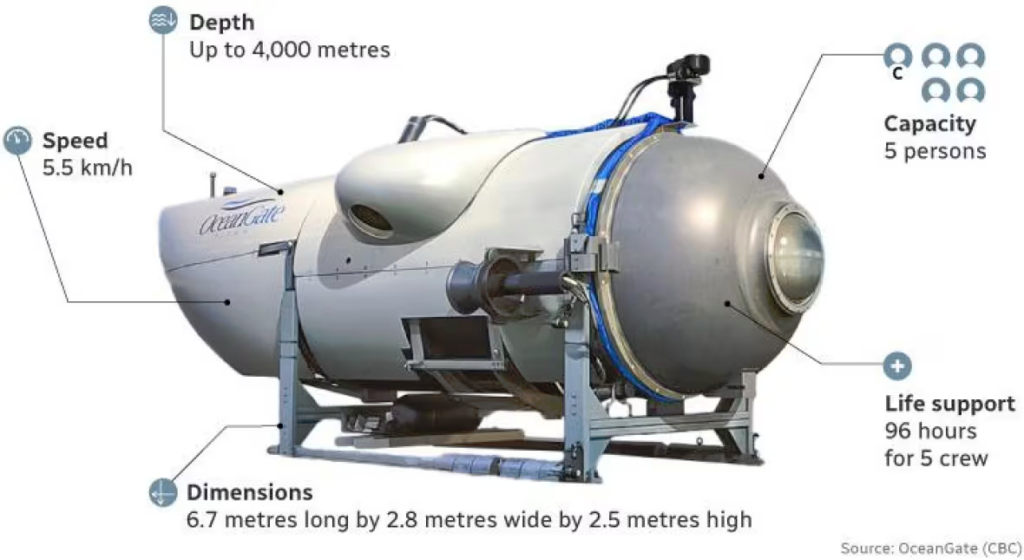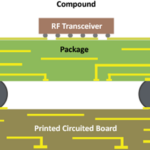When doing engineering development at a keyboard, it’s easy to overlook the huge role that materials and material science play in electronics and their amazing components.
We don’t know what caused the apparent implosion and subsequent loss of OceanGate’s Titan submersible, and we may never know the root causes. Various experts and pundits have chimed in, speculating — and I emphasize that word — that it may have been a power cut, a short circuit causing a fire, flooding, entanglement, use of an off-the-shelf Logitech controller, cheap camping store inside lamps, or outright gross material failure of the pressure hull (Figure 1).

It would be pointless for me to try to offer any insight into the loss. Still, the discussion reminded me of the ease with which engineers — especially those who spend most of their days at the keyboard writing code, apps, or embedded software — can easily drift away from recognizing the role of basic materials science in modern technology ranging from deep-sea diving vessels to semiconductor power devices and even humble multi watt, milliohm current-sense resistors.
Yes, most engineers are aware that overheating can destroy a component if the temperature goes beyond a defined absolute maximum limit such as -40°C or +125°C, depending on the specifics. For many devices, the molecules of the base material may start to behave in strange ways and not recover even when temperatures come back to the allowed range.
There is also the well-known phenomenon of thermal shock (stress) which can produce excessive thermal gradients within a homogeneous material, which in turn leads to excessive stresses (Figure 2). These stresses can be comprised of tensile stress, which is stress arising from forces acting in opposite directions tending to pull a material apart, and compressive stress, which is stress arising from forces acting in opposite directions tending to push a material together. For thermal shock, the temperature does not need to exceed predefined limits, and the rate at which the temperature changes is also a factor.

But why stop at thermal shock? There’s also pressure shock and pressurized thermal shock, the shock experienced by a thick-walled vessel due to the combined stresses from a rapid temperature and/or pressure change. It’s especially challenging when two dissimilar materials join and have different thermal or mechanical expansion coefficients.
The Titan was made with a center carbon-fiber cylinder with two hemispherical endcaps made of titanium. Rather than being a spherical cabin that equalizes the loading in all directions, it had an elongated cabin space which resulted in increased pressure loads in the midsections, which in turn increases fatigue and delamination loads.
But these thermal and mechanical stresses are not static one-time events. The Titan’s 5-inch thick (12.7 centimeters) hull had been subjected to repeated stress over the course of about two dozen previous dives. Each trip could put tiny cracks in the structure. These might be small and undetectable to start but would soon become critical and produce rapid and uncontrollable growth of these cracks. The crack-growth scenario is even more difficult at physical interfaces between different materials such as between the carbon-fiber cylinder and titanium end caps or the titanium-gasket-viewing window assembly.
This consequence of repeated thermal and pressure swings is called cyclic fatigue and can lead to gross macro failure. Note that military and deep-diving commercial submarines do not have these joints where materials meet; instead, they have a welded seamless “unibody” construction.
Recognition of the potential for cyclic fatigue and subsequent crack growth and eventual failure is not new, but its impact was better grasped in the 1950s when several Lockheed L-188 Electra commercial aircrafts crashed after a modest number of flights. The cause was eventually determined to be the result of a destructive wing flutter initiated by a propeller “whirl mode.”
The whirl-mode phenomenon was the result of a loss of structural rigidity following the failure of an engine mount during a hard landing. The propeller whirl-mode frequency coupled with the natural frequency of the wings drove a destructive flutter mode. The two accidents resulted in a substantial design evaluation and a subsequent redesign of the engine nacelles and mounting structure.
Cyclic fatigue and failure were even the “mystery” storyline of a 1951 movie “No Highway in the Sky” starring screen legends James Stewart and Marlene Dietrich. Engineer Stewart has a sudden realization, as he grapples with data disparities, that cyclic-fatigue failure is accelerated by the unavoidable thermal cycling that an aircraft undergoes as part of its normal cycling between modest ground temperature and extreme cold at flight altitude.
All this may be interesting, but it also seems to have little at first to do with tiny electronic components and circuit boards which aren’t going anywhere special. But these building blocks we design and use every day are also subject to thermally induced cyclic stresses.

Consider the effect on the internal connections and arrangement of a power device as it is turned on and off, and so heating up and cooling down, yet never exceeding any thermal limits. The differing coefficients of thermal expansion between one material and another can lead to micro-cracks and crack growth. It can even happen on a PC board, solder joint, and at a component lead, or packaging (Figure 3).
The problem is that it is easy to ignore these effects until it is too late. After all, the tremendous successes in materials science, design, and fabrication have yielded reliable products for the most part, the keyword being “most.” For many engineers, worries about thermal- and pressure-induced cycling is a non- or minor issue. Many designers are instead worried about basic cooling (or even heating) needed to avoid outright thermal-caused failure. But if you have access to good data and look at the field-failure modes, many are related to modest thermal cycling and crack growth rather than exceeding absolute-maximum limits.
Although the failure of an electronic component is not on the same scale as whatever doomed the Titan, any failure can be catastrophic in its own way. The deeper lessons here are 1) give serious design analysis of thermal issues (and pressure, if appropriate) including cyclic fatigue, using a reliability specialist if you have to; and 2) give some respect to the material scientists and engineers who have accomplished so much and yet made it all look so easy — it’s not.
Related EE World Content
Bare element shunt resistors help lower thermal stress of PCBs
Stress & Strain, Part 1: Fundamental principles
Stress & Strain, Part 2: Implications for electronics
Portable bridges reveal their stresses to data recording systems
Tougher stress tests for automotive MOSFETs
What are three key performance needs for HVAC/harsh environment connectors?
References
The Titan Loss (these are just a few of the thousands of available news reports and resources)
- PBS, “Experts say the Titan sub’s unconventional design may have destined it for disaster
- WFLA-TV, “Titan failure likely caused by repeated dives, retired Navy captain says”
- Metro-UK, “How many trips to the Titanic did the OceanGate Titan submersible make and how deep is the wreck?”
- Wikipedia, “2023 Titan submersible incident”
Lockheed L-188 Electra and cyclic fatigue/failure
- Federal Aviation Administration, “Lockheed L-188 Electra Accident Report”
- EPI, “Whirl Mode – The Potentially Deadly Design Omission”
- Wikipedia, “Lockheed Electra L-188”
- Northwest Airlines History Center, “Aircraft – Lockheed L-188 Electra”
- InTech, “Current Issues and Problems in the Joining of Ceramic to Metal”
- Engineering Library, “Thermal Shock”







Leave a Reply
You must be logged in to post a comment.